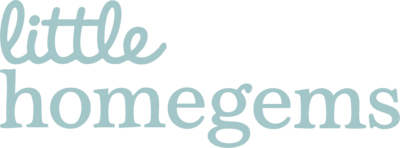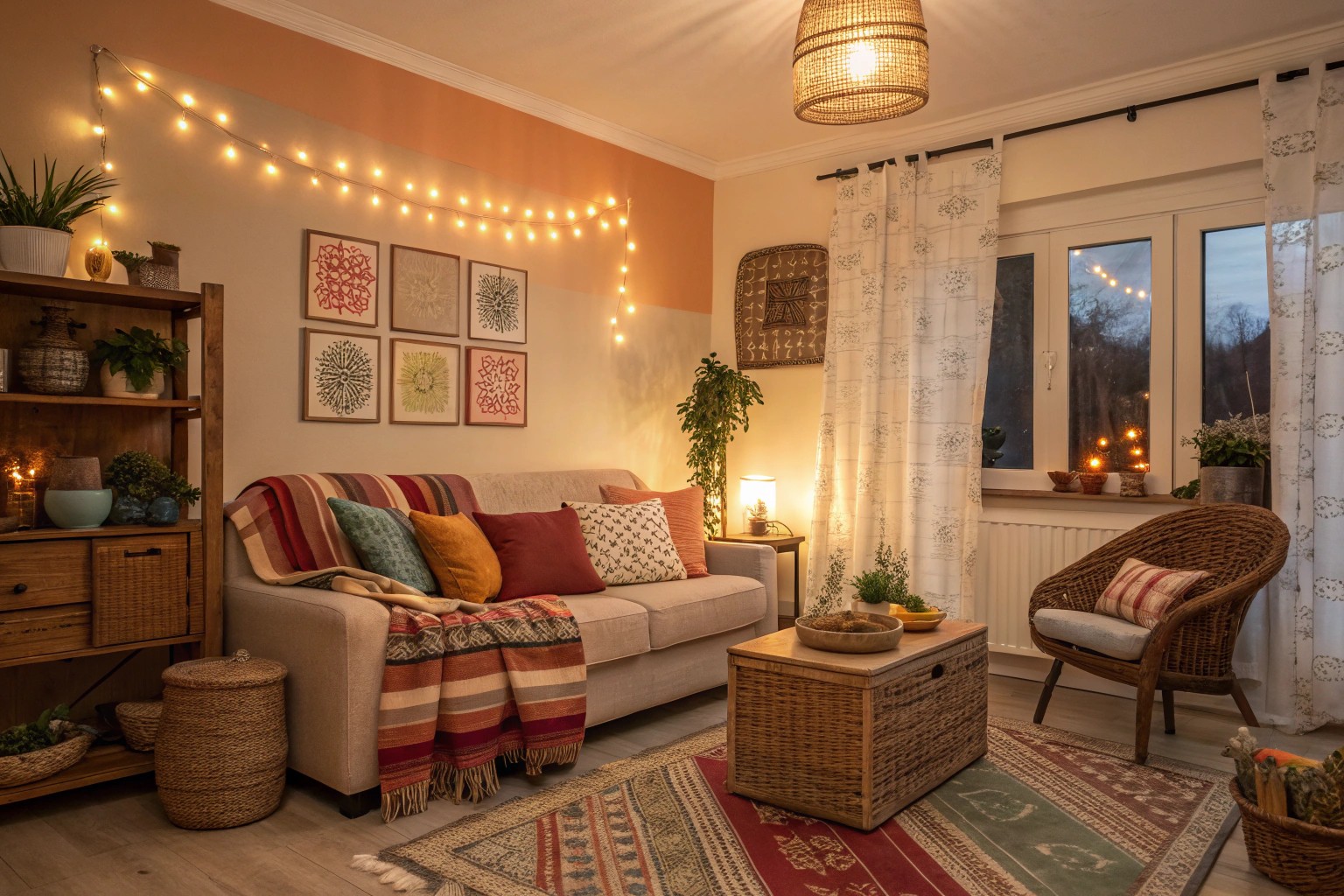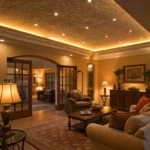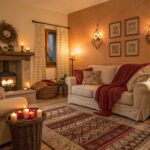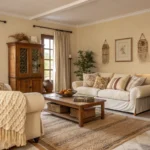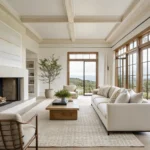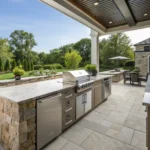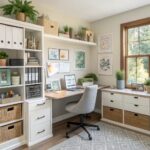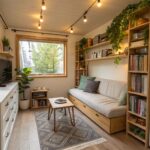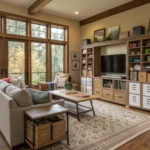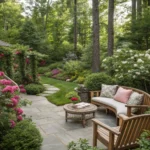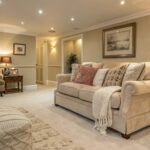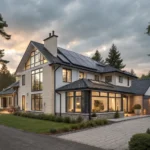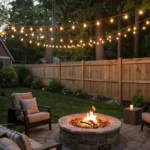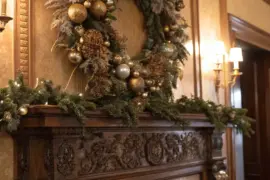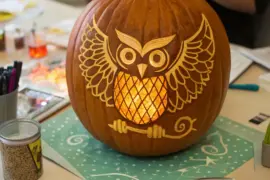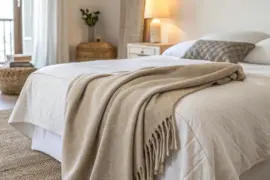Color transforms spaces in ways that go far beyond traditional brush-applied paint, offering countless opportunities to infuse personality and vibrancy into both interior and exterior environments. The most compelling design solutions often emerge when we step away from conventional painting methods and explore alternative techniques that create texture, pattern, and visual interest through innovative application methods.
Texture-Based Interior Techniques
Stenciling for Precision and Pattern
Stenciling remains one of the most versatile methods for introducing color without traditional brushwork. The key to professional results lies in mastering the dry brush technique, where excess paint is removed from the brush before application. This approach builds color gradually through multiple thin layers, preventing paint bleeding under the stencil edges.
Essential Stenciling Principles:
- Secure the stencil firmly using low-tack painter’s tape to prevent movement
- Apply paint by tapping toward the center of each opening rather than brushing side-to-side
- Allow each layer to dry completely before removing the stencil
- Use round sponge brushes or flat bristle brushes for optimal control
For larger projects or geometric patterns, consider using dome stipple brushes, which provide superior control by preventing outer bristles from splaying underneath the stencil. If dome brushes aren’t available, you can modify regular stipple brushes by trimming them into a dome shape, cutting from bottom to tip while angling corners inward.
Sponge Techniques for Organic Effects
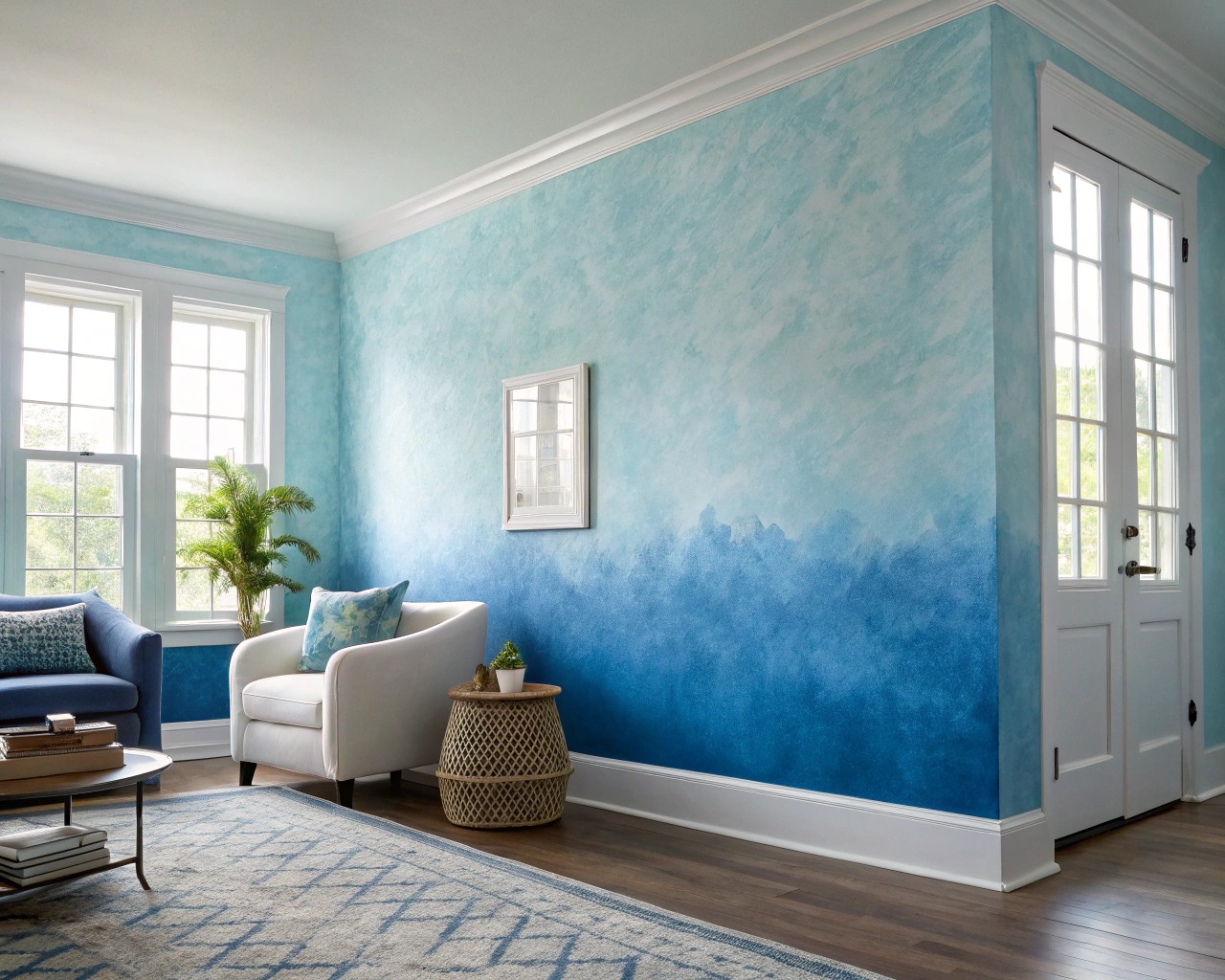
Sponge painting creates beautiful ombre color effects where colors blend naturally into one another. This technique involves applying a base coat and then dabbing additional colors over it, allowing the underlying color to show through. The process is particularly forgiving—if sections appear too light, you can easily add more color without starting over.
Sponge Painting Method:
- Begin with a flat or eggshell base coat for easy-to-clean surfaces
- Mix topcoat colors with faux glaze for extended working time
- Use natural sea sponges for organic, varied textures
- Work in manageable sections, typically 3-4 feet square
- Apply colors in thin layers, building depth gradually
The technique works exceptionally well for creating subtle, cloudy effects when using multiple colors, while fewer colors produce bolder, more contrasted finishes.
Texture Rollers for Architectural Interest
Specialized texture rollers open up numerous possibilities for creating sophisticated wall finishes without brushes. These tools can replicate expensive materials and finishes at a fraction of the cost.
Popular Texture Roller Applications:
| Texture Type | Best For | Visual Effect |
|---|---|---|
| Linen Pattern | Rustic/Farmhouse themes | Woven fabric appearance |
| Sponge Effect | Coastal/Beach themes | Weathered, mottled finish |
| Stripe Pattern | Modern/Contemporary | Clean geometric lines |
| Brick Texture | Industrial/Urban themes | Dimensional masonry look |
| Wood Grain | Natural/Organic themes | Realistic wood appearance |
When using texture rollers, apply a base coat first and allow complete drying. Then load the textured roller with contrasting color and work in single, consistent directions rather than back-and-forth motions to prevent stencil shifting.
Combing and Rag Rolling Techniques
Combing technique creates sophisticated linear patterns by dragging specialized tools through wet paint. This method works particularly well for creating wood grain effects or abstract geometric patterns. Hold the comb at a slight angle and experiment with straight lines, zigzags, circles, or wave patterns to achieve varied visual effects.
Rag rolling offers another approach to texture creation. The technique involves rolling a damp, loosely bundled cloth across freshly applied glaze, creating patterns where the cloth removes glaze from the surface. For best results on larger areas, work with a partner—one person applies the glaze while the other follows with the rag rolling technique.
Alternative Application Methods
Spray-Applied Water-Based Solutions
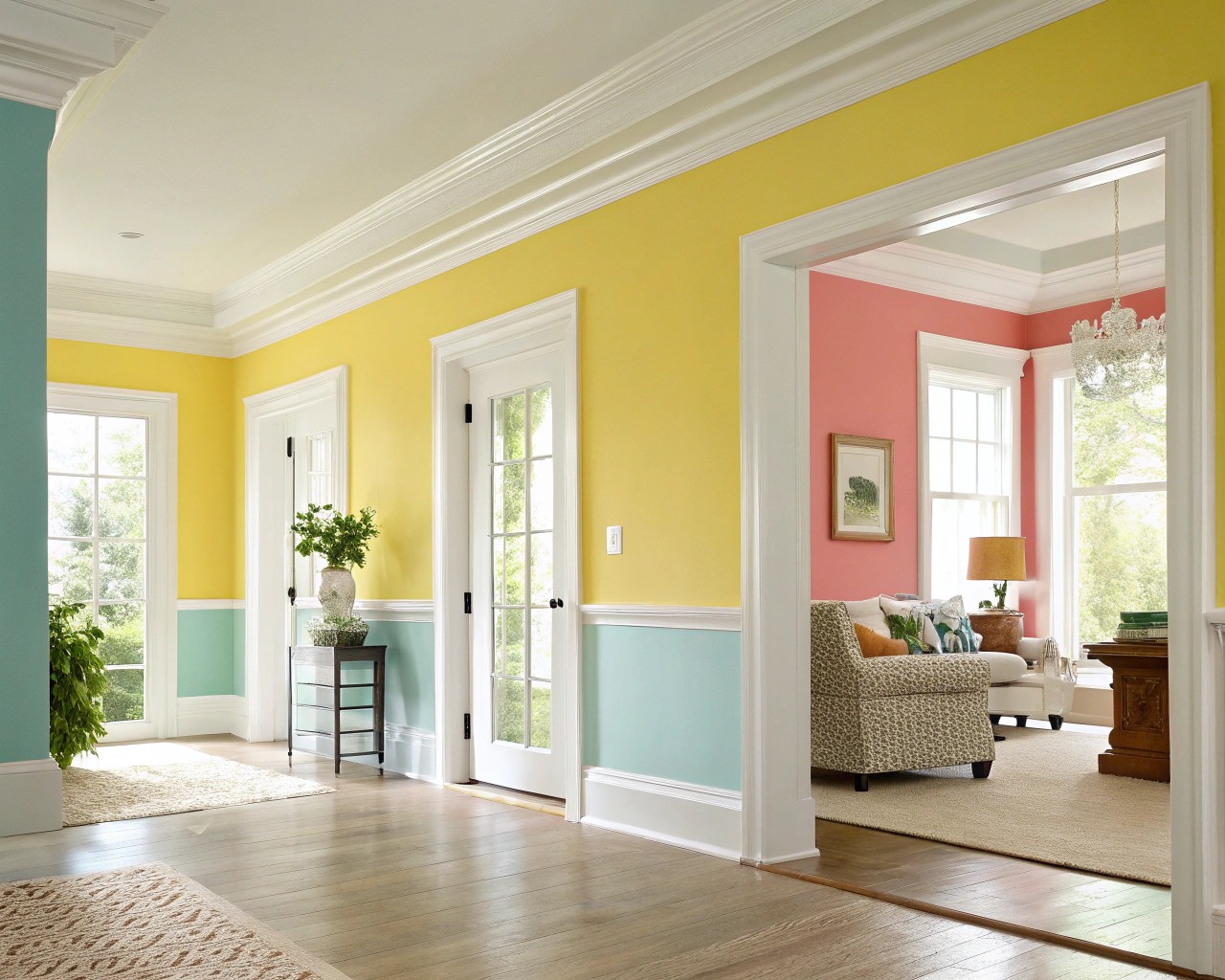
For those seeking alternatives to aerosol spray paints, water-based paints can be spray-applied using appropriate equipment. This method eliminates solvents and propellants found in aerosol cans while maintaining the convenience of spray application.
Recommended Spray Application Paints:
- Chalk or chalked paints for interior surfaces
- AFM MetalCoat primer for metal surfaces
- Diluted water-based paints mixed according to manufacturer specifications
Chalk paints deserve particular attention for their exceptional adhesion properties, sticking to metals, glass, ceramics, oil-based paint, shellac, plastics, wood, drywall, fabric, concrete, brick, and stone surfaces.
Squeegee and Paste Techniques
For creating raised, textural finishes, consider using rubber squeegees with thicker paint consistencies such as pastes or gels. This technique works exceptionally well for card making, sign creation, and even cookie decorating. Apply a generous amount of paste-consistency paint and use the squeegee to push paint into the stencil design while removing excess from the surface.
Removable and Temporary Color Solutions
Vinyl Wall Decals
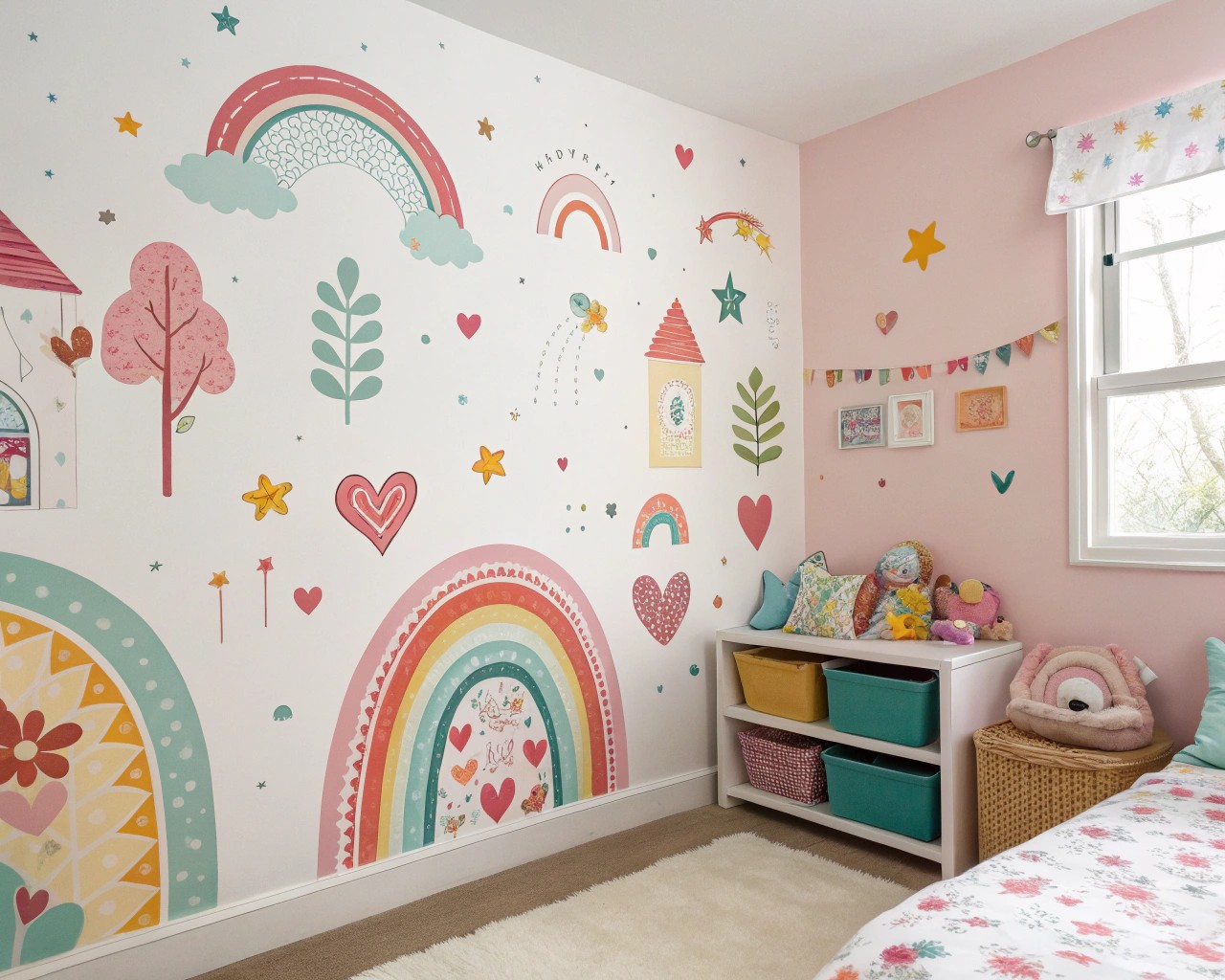
Custom vinyl wall decals offer remarkable versatility for adding color and pattern without permanent commitment. These removable adhesive applications can create anything from simple accent designs to complex patterns that mimic wallpaper effects.
Vinyl Decal Advantages:
- Available in countless colors, sheens, and patterns
- Completely customizable when used with electronic cutting machines
- Quick installation (typically under an hour)
- Easily removable without wall damage
- Cost-effective compared to wallpaper or professional painting
Peel-and-Stick Wallpaper Options

Modern removable wallpapers provide sophisticated color and pattern options for renters and homeowners seeking temporary design solutions. Leading options include paper-based products with smooth finishes for easy installation, fabric-based alternatives with tactile woven textures, and premium options with superior print quality.
When selecting removable wallpaper, consider the wall surface texture and finish. These products work best on non-textured walls painted with most standard finishes, though removal ease varies depending on specific wall conditions.
Landscape and Exterior Color Applications
Natural Color Through Plant Selection
Strategic plant selection provides the most sustainable approach to landscape color. Understanding color theory principles enhances plant combination success significantly.
Effective Color Combinations:
- Triadic schemes: Use colors three spaces apart on the color wheel (red-yellow-blue or orange-purple-green)
- Complementary pairs: Choose opposing colors for maximum impact (blue-orange, yellow-purple, magenta-chartreuse)
- Analogous groupings: Select three adjacent colors for harmonious, calm effects
- Monochromatic themes: Focus on single-color variations for sophisticated unity
I often recommend starting with proven combinations like light blue hydrangeas with chartreuse foliage and white accents, or hot pink flowering trees with burgundy and apricot companions for dramatic seasonal displays.
Hardscaping Color Elements
Pea gravel serves as an excellent foundation for landscape color schemes, with options ranging from neutral tones to dramatic darker hues. Light-colored gravels like beige, light gray, and tan work beautifully in cottage garden settings, while dark gray or black varieties provide sophisticated contrast in modern landscapes.
Gravel Color Selection Guidelines:
- Light colors: Reflect sunlight, make spaces appear larger, show dirt more readily
- Dark colors: Hide dirt well, create dramatic contrast with plantings
- Warm earth tones: Complement Mediterranean and desert themes
- Maintenance considerations: Factor in cleaning requirements and longevity
Colored mulch offers another opportunity for landscape color, though natural options generally provide better soil benefits than dyed alternatives. When selecting colored mulches, prioritize products using safe iron oxide-based dyes for red colors or carbon-based dyes for black and brown options.
Vertical Garden Systems
Living walls represent an advanced approach to adding color through natural elements. Modern systems like the F+P vertical garden method use hydroponic irrigation scaled to garden size, with automated watering and fertilization controls.
Vertical Garden Components:
- Cellular PVC panels with integrated waterproofing systems
- Aluminum joining pieces for seamless panel connections
- Automated irrigation with self-compensating drippers
- Pre-assembly capabilities for streamlined installation
These systems excel in outdoor applications where traditional color application methods face weather-related challenges.
Color Psychology and Strategic Planning
Understanding color psychology enhances the effectiveness of any color application method. Different colors evoke specific emotional responses that should align with intended space usage.
Color Psychology Applications:
- Bedrooms: Light blues, lavenders, sage greens for relaxation
- Offices: Forest greens, coffee browns, sky blues for productivity
- Dining areas: Deep purples, grays for sophistication
- Children’s spaces: Bright, energetic colors for stimulation
- Bathrooms: Moss greens, earth tones for organic calm
When planning color schemes, consider both immediate visual impact and long-term maintenance requirements. Light colors may require more frequent refreshing in high-traffic areas, while darker options provide better concealment of wear over time.
Implementation Strategies
Success with alternative color application methods requires systematic planning and execution. Begin with small test areas to perfect techniques before committing to larger surfaces. This approach proves particularly valuable for texture techniques like sponging, combing, and rag rolling, where subtle variations in pressure and timing significantly affect final results.
For permanent applications, invest in quality materials and tools. Professional-grade stencils, natural sea sponges, and appropriate paint consistencies produce superior results compared to economy alternatives. For temporary solutions like vinyl decals or removable wallpaper, prioritize ease of removal and surface compatibility to ensure clean results when design changes occur.
